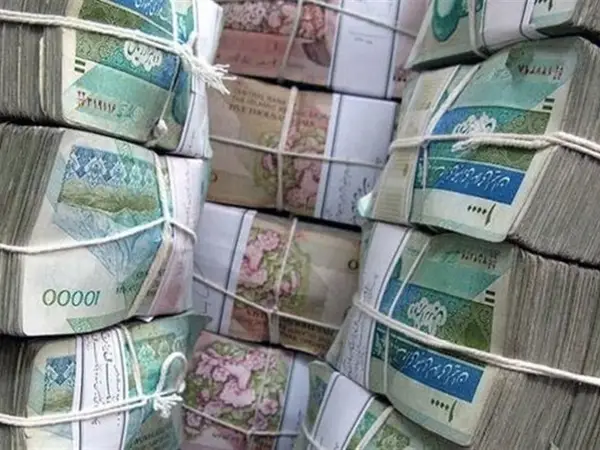As Iran’s economic situation worsens, Tehran media report that in the past seven months more than 1,000 trillion rials were printed and added to the money supply.
Taking an average of the US dollar exchange rate, the amount comes close to just $4 billion, but Iran has been lavishly printing more money since 2018 when the United States imposed economic sanction after it withdrew from the Obama-era nuclear accord known as the JCPOA.
The astronomical amount in rials constitutes 18 percent of the money supply in this period. In August the money supply had reached 50 quadrillion rials. That is 50 with fifteen zeros.
Mahmoud Jamsaz, an economist in Tehran told Khabar Online news website in July that in the past Iranian year, from March 2021-to March 2022, the government was printing the equivalent of $15 million a day to finance its budgetary shortfall. That is 3.8 trillion rials every day.
The accumulated weight of the money in circulation has effectively devalued the currency, rial, by more than tenfold since early 2018. Money changers in Tehran on Thursday were selling one US dollar for 384,000 rials, a jump of more than 30 percent in one year.
US oil export sanctions have cut Iran’s shipments in half, which mostly go to China, but according to the desperate government in Tehran, all exports are up, and the picture is rosy. However, talking up the rial is not an effective strategy any longer, because few people believe the president, much less other officials.
In order to partially slow down the rial’s fall, the central bank injects dollars into the market, as can be detected from daily exchange rate fluctuations in Tehran, but no official information is given out.
Latest reports on social media indicate that the currency’s fall is not viewed as a normal trend anymore and a panic is setting in to buy foreign currencies and gold. This in turn accelerates the crisis, especially in the light of political uncertainty triggered by three months of anti-regime protests.
The biggest immediate reason for printing money is government borrowing from the Central Bank of Iran (CBI) to bridge its budget deficit estimated to be 50 percent. But the CBI has little gold or foreign currency reserves to back the rial banknotes it prints. The rial is not a fungible currency like the US dollar and no one invests in buying excess rials, the same way hard currencies function and better maintain their value.
The printing presses at the CBI were especially working overtime from September 21 to October 20 - the Iranian month of Mehr. This is after it became clear that talks with the United States to revive the JCPOA had hit a snag, and also after popular protests erupted.
This means that pessimism took hold in Tehran and people began hording dollars. In addition, the government was losing on tax collection as unrest closed businesses, while it had to paying extra to tens of thousands of security forces to keep them in the streets against the protesters. The government was perhaps also forced to be more generous with ordinary salaries, making timely payments to prevent more people from joining the unrest.
Another reason mentioned by local media is the scenario whereby government-owned banks began demanding money from the central bank amid their own balance sheet crises. The CBI charges the banks 21 percent interest for loans, which boosts the already 50-percent inflation rate.
Local sources say that bank borrowings from the CBI even accelerated in November and reached 910 trillion rials, which means the central bank has to print even more money in the coming weeks.
